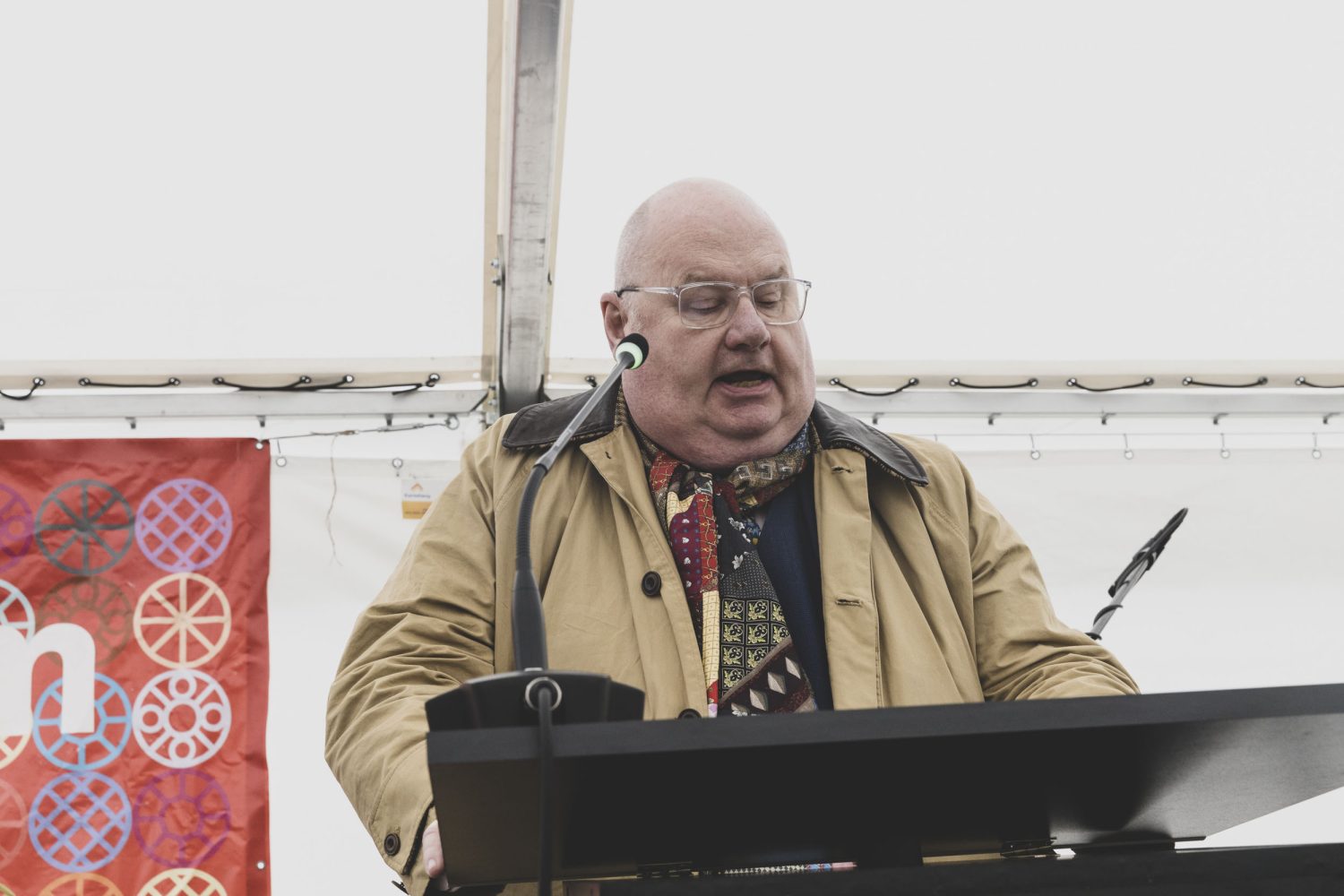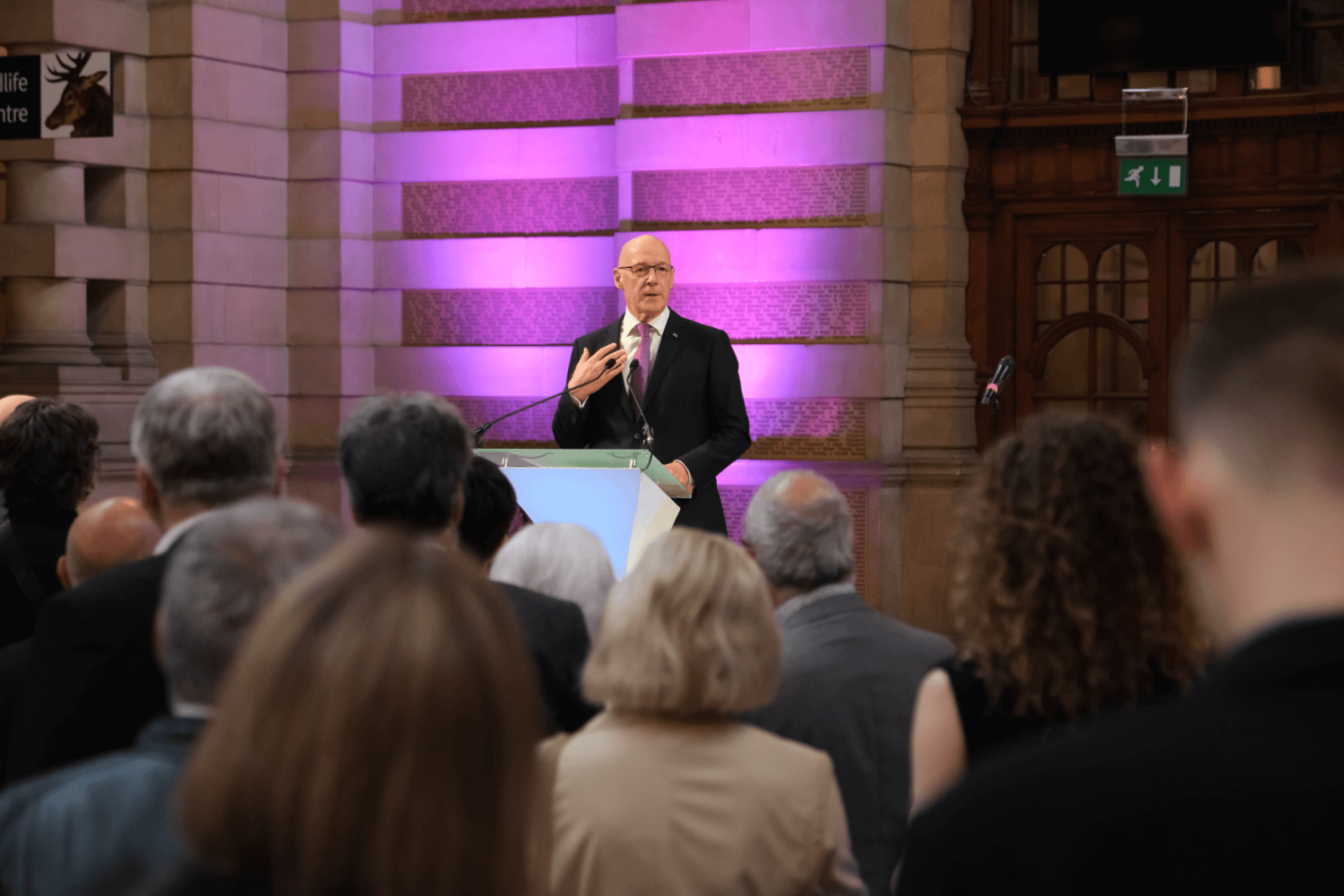
01 February 2024
Time to read: 4 mins
Ambassador Terezija Gras, Co-Chair of the Croatian IHRA Presidency, speaks at the OSCE Permanent Council
1 February 2024
Mister Chairman,
Excellencies,
Ladies and Gentlemen,
- It is an honor to join you here today to mark International Holocaust Remembrance Day.
- I am speaking to you in my capacity as Co-Chair of the Croatian Presidency of the International Holocaust Remembrance Alliance – the IHRA – which is the only intergovernmental organization with a mandate focused solely on issues related to the Holocaust and the genocide of the Roma.
- We gather 35 Member Countries, 9 observers and 9 permanent international partners to promote and enhance education, remembrance, and research of the Holocaust and the genocide of the Roma, as well as to combat Holocaust distortion, antisemitism, and antigypsyism.
- One of our closest partners is of course the OSCE’s Office for Democratic Institutions and Human Rights, given its important role in these fields.
- Last year, for example, ODIHR joined us as a valued partner in our Protect the Facts campaign which raises awareness of Holocaust distortion.
- We also appreciate the important work being done by the Personal Representative of the Chairperson-in-Office on combating antisemitism in all its forms.
- Our partnership is proof that cooperation built on shared values is the only way forward.
Excellencies,
- For many years, the IHRA has prioritized safeguarding the record of the Holocaust. But we know that this process began many years before. Indeed, it began during the Holocaust itself – with people like Sidney Taussig.
- I would like to tell you his story.
- At the age of just 14, Sid Taussig found himself documenting the unthinkable. Together with a group of other boys at Terezin, he put together a magazine called Vedem.
- Each issue was developed in secret. And each issue was an act of defiance that thwarted the Nazi’s intentions of destroying the Jewish people. The issues featured interviews, stories and drawings that gave the boys hope amidst a cruel reality of death and destruction.
- One by one, Sid’s young friends were transported to Auschwitz and sent to their deaths. Their thoughts and dreams, immortalized in the issues of Vedem, were now with Sid, the last boy left.
- Feeling an overwhelming sense of responsibility to preserve his friends’ memories, Sid protected Vedem, until one day he too was about to be transported to Auschwitz. He was now facing his own death. Vedem could be lost forever.
- An unexpected twist of fate intervened, however. Rahm, the last head of the SS in Terezin, gave an order ensuring that a certain number of craftsmen and their families were to remain in the camp. An SS guard, familiar with Sid’s father’s work as a blacksmith, intervened before the transport departed and Sid was spared.
- Surviving, Sid resolved to share Vedem with the world. He hid the magazine with the ashes of his grandmother, who had died at Terezin and waited for the ghetto’s liberation.
- The people Sid knew who were imprisoned with him in Terezin have all gone. Sid told the IHRA his story just before he himself passed away on December 13th last year.
- But Vedem remains to honor their memory and remember their suffering and their courage during the Holocaust. So too does the Terezin Memorial.
- When we visit Terezin today, we can see the original copy of Vedem in their collections. That is, we can see it in the place where it was created against all odds.
- When we do this, we too can only feel that overwhelming sense of responsibility to carry on the process that began with people like Sidney Taussig. We feel an immense responsibility to safeguard the record, to safeguard Sid’s memory.
- What would it mean if this were no longer possible? What would it mean if we ignored this responsibility, if we ignored our political commitments?
Distinguished delegates,
- Between 1933 and 1945, Nazi Germany and its allies established more than 44,000 ghettos, camps and other incarceration sites across Europe. These sites contain millions of stories, which serve as a warning from our collective history that the unthinkable is always possible.
- Allowing these sites to fall into ruin or become victims of vandalism or other external threats is the first step in dismantling the foundations of our societies. If we let the walls crumble, and the stories within them lose their meaning, we are sending a message that this ideology is acceptable, and that this history is no longer important.
- If the stories of the Holocaust are abundant – and protected – in the places where they happened, their impact will continue to reverberate through generations. In this way, sites will teach future generations that antisemitism and other forms of hatred are incompatible with Europe’s core values and represent a threat to our democratic, pluralistic societies. This is why safeguarding the record is not just about protecting the past; it is about protecting the present and most importantly, it is about protecting the future.
Dear friends,
- We live in a world where Jewish people are removing Mezuzas from their doors and not sending their children to Jewish schools or campuses out of fear.
- We must strengthen the moral commitment of our societies, and the political commitment of our governments, to ensure that future generations can understand the causes of the Holocaust and reflect upon its consequences.
- Last week, we launched the IHRA Charter for Safeguarding Sites, which was recently adopted by all 35 IHRA Member Countries in Zagreb. This is a powerful tool to protect the memory of the Holocaust, to realize this political commitment.
- The IHRA Charter lays out safeguarding principles, practices, responsibilities, and common threats to sites, thus enabling sites to continue to authenticate history, in the same way the survivors did.
- We are aware that nothing and no one will ever replace the survivors and the witnesses of the Holocaust, for they remain the only true experts of the most documented genocide in history.
- However, the sites do speak, if we listen. It will take time for us to learn how to interact and for now, we must start to speak their language. With the IHRA Charter for Safeguarding Sites, we begin that journey. We do it with ownership. We do it with purpose. We do it together.
- We ask you all to join us in this journey to safeguard sites, to implement the Charter, to share it in your governments and ministries.
- And as we do so, we think about those victims and survivors, people like Sidney Taussig, who are no longer with us.
- We cling to the stories they told us. We remember the lives they lived in places where death was imminent.
- May their memory live on, woven throughout the 44,000 sites across Europe. May it forever be a pillar that combats antisemitism and counters Holocaust distortion. May it be a blessing for the future. A future of remembrance.



